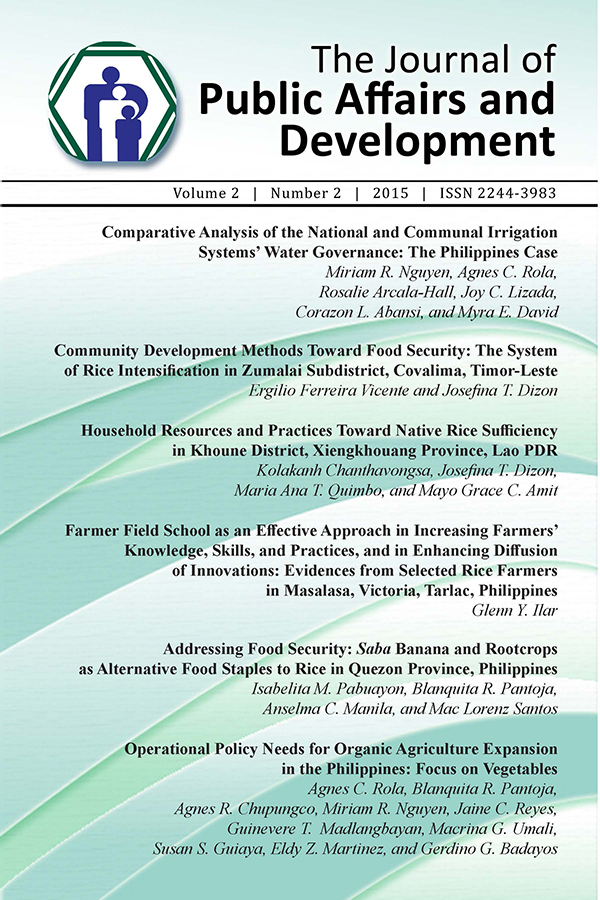Household Resources and Practices Toward Native Rice Sufficiency in Khoune District, Xiengkhouang Province, Lao PDR
Abstract
A case study was conducted in Na-Ou and Xang villages in Khoune district, Xiengkhouang province, Lao PDR to discuss the households’ resources and practices in attaining native rice sufficiency. Data were gathered through a combination of methods that included a survey of 91 households, focus group discussions, key informant interviews, actual field observations, and secondary data analysis. The study villages are largely rural, popular nationwide for their native sticky rice varieties, and regarded as models in native sticky rice production. There are also areas of wetland for rice cultivation that are suited to grow the age-old native sticky rice varieties.
The native rice farmers in these villages are rice selfsufficient because of their household resources and practices. In their households, they possess adequate farming experiences, land
parcels, household technology, farm tools, basic farm machinery, organic fertilizers, rice storage system, and positive attitude and unwavering intent to crop their age-old sticky rice varieties. Their household level practices that contribute to their native rice sufficiency are use of technology that is fundamentally traditional and suitable to the place; engaging in husband-wife enterprise; familial and communal rice farming; and seed variety preservation.
A SWOT analysis of the existing native rice production system reveals a number of strengths as well as weaknesses. However, there are also a lot of opportunities, which the farmers can exploit, to address the weaknesses and the threats confronting native rice production.
Copyright (c) 2017 UPLB College of Public Affairs and Development

This work is licensed under a Creative Commons Attribution-NonCommercial-ShareAlike 4.0 International License.
This is an open access article licensed under Attribution-NonCommercial-ShareAlike 4.0 International (http://creativecommons.org/licenses/by-nc-sa/4.0/).


